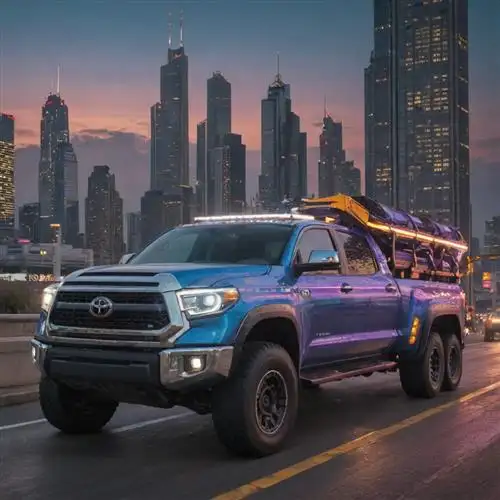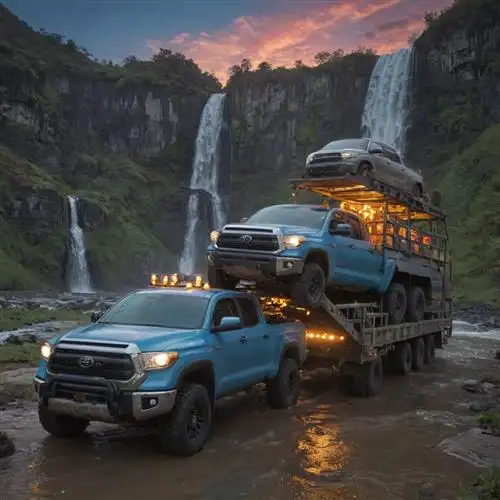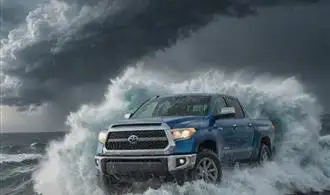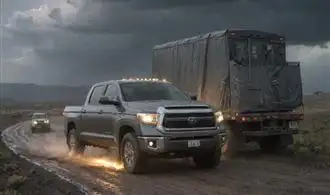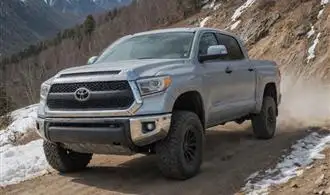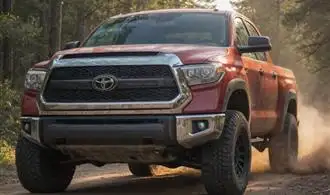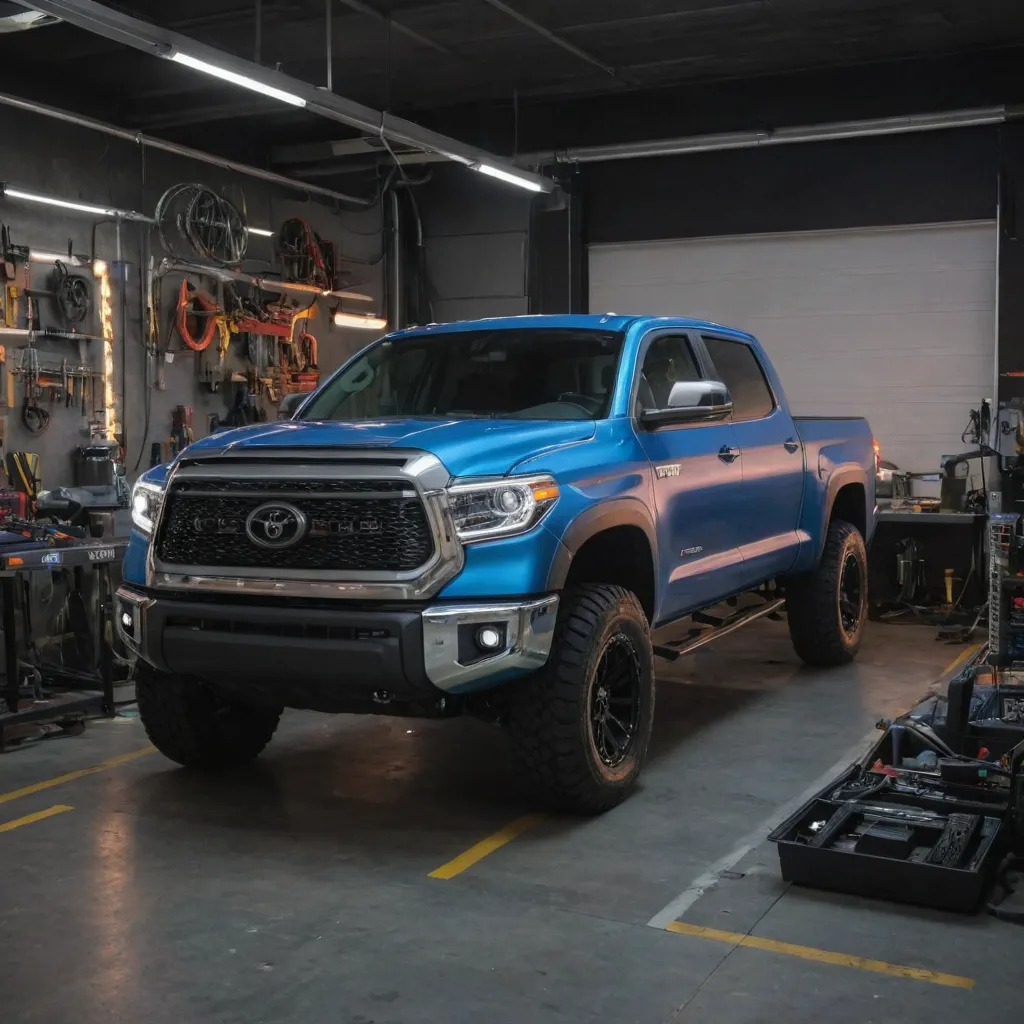
Understand Your Towing Capacity
Towing capacity is a critical factor for Toyota Tundra owners who need to haul heavy loads. This specification determines the maximum weight your truck can safely pull, which includes the weight of the trailer, cargo, and any passengers or additional equipment. Understanding your Tundra's towing capacity is essential to avoid overloading the vehicle and potentially risking the safety of yourself and others on the road.
To determine your Tundra's towing capacity, you'll need to consult the vehicle's owner's manual or the information label located on the driver's side door jamb. This will provide the maximum towing capacity for your specific model and configuration. Keep in mind that towing capacity can vary based on factors such as engine size, drivetrain, and whether your Tundra is equipped with a towing package.
When loading your trailer, it's important to distribute the weight evenly and stay within the Tundra's maximum gross combined weight rating (GCWR). This rating includes the weight of the truck, the trailer, and all cargo and passengers. Exceeding the GCWR can lead to poor handling, increased braking distances, and potential damage to your vehicle's drivetrain.
- Weigh your loaded trailer on a commercial scale to verify the total weight.
- Check the tongue weight of your trailer, which should be around 10-15% of the total trailer weight.
- Properly distribute the load in your trailer, with heavier items towards the front and balanced side-to-side.
- Ensure your trailer's brakes are in good working condition and that you have the appropriate trailer brake controller installed in your Tundra.
- Consider upgrading to a more powerful engine or adding a towing package if you regularly tow near the limit of your Tundra's capacity.
Properly Distribute the Load
Towing a heavy load with your Toyota Tundra requires careful consideration of weight distribution. Improper load distribution can lead to poor handling, increased stopping distance, and even dangerous sway. As a Tundra owner, it's essential to understand the principles of balanced weight distribution to ensure a safe and stable towing experience.
When loading your trailer or camper, focus on placing the heaviest items as close to the axle as possible. This helps to maintain the proper tongue weight, which is the amount of weight pressing down on the Tundra's hitch. The recommended tongue weight is typically 10-15% of the total trailer weight. Distribute the load evenly from side to side to prevent the trailer from pulling to one side and affecting your steering.
Pay close attention to the Tundra's maximum towing capacity and the trailer's gross vehicle weight rating (GVWR). Do not exceed these limits, as doing so can compromise the vehicle's handling, braking, and overall safety. Weigh your fully loaded trailer and adjust the load as needed to stay within the recommended specifications.
Consider installing a weight-distributing hitch, which helps transfer some of the tongue weight to the front and rear axles of your Tundra. This can improve stability and handling, especially when towing heavy loads. Ensure that the hitch is properly adjusted and that the load is evenly distributed across the axles.
During the towing process, regularly check your side mirrors to monitor the trailer's position and watch for any sway or instability. If you experience excessive sway, slowly reduce your speed and gently apply the trailer's brakes (if equipped) to regain control.
Upgrade Your Towing Equipment
As a Toyota Tundra owner, ensuring your truck is equipped with the right towing equipment is crucial. Upgrading your setup can significantly enhance your towing capabilities, improve safety, and provide a more comfortable overall experience. Let's dive into some key considerations when upgrading your towing equipment.
First and foremost, evaluate your towing needs. Assess the weight and size of the trailers or cargo you typically haul. This information will guide you in selecting the appropriate hitch, suspension system, and other accessories to handle the load safely. Remember, the Toyota Tundra has a towing capacity that varies depending on the model, so be sure to consult your owner's manual or speak with a trusted Toyota dealer to determine the maximum weight your truck can safely tow.
Next, consider upgrading your hitch system. A high-quality hitch, such as a gooseneck or fifth-wheel hitch, can offer superior stability and weight distribution compared to a standard ball-and-coupler setup. These advanced hitch systems often feature adjustable height and weight-distributing capabilities, allowing you to fine-tune the load to your Tundra's capabilities.
Upgrading your suspension system can also be a game-changer when it comes to towing. Look into adding heavy-duty coils, shocks, or airbags to your Tundra's suspension. This will help maintain a level ride height, improve stability, and provide a smoother towing experience, even when hauling heavy loads.
Don't forget about your trailer's braking system. Ensure your Tundra is equipped with a compatible electric or hydraulic trailer brake controller. This will allow you to synchronize the trailer's brakes with your truck, enhancing safety and control, especially when descending steep hills or navigating tight turns.
Finally, consider investing in auxiliary lighting and mirrors to improve visibility and safety when towing. LED taillights, backup cameras, and extended side mirrors can all contribute to a safer and more confident towing experience.
Practice Safe Towing Techniques
Towing with your Toyota Tundra requires exceptional care and attention to ensure the safety of you, your vehicle, and others on the road. As a Tundra owner, it's crucial to familiarize yourself with the proper towing techniques to avoid any costly or potentially dangerous situations. One of the most important aspects of safe towing is maintaining control of your vehicle and the load you're transporting.
Before you hit the road, it's essential to check the weight and balance of your load. Ensure that the weight is evenly distributed across the trailer or tow dolly, and that the total weight doesn't exceed the Tundra's towing capacity. Overloading can lead to instability, making the vehicle challenging to control and increasing the risk of an accident.
Another critical factor in safe towing is adjusting your driving style. When towing a heavy load, your Tundra's handling and braking performance will be significantly impacted. Accelerate and brake gently, allowing extra time and distance for maneuvers. Maintain a slower speed, especially when navigating turns, hills, or inclement weather conditions. Sudden movements or high speeds can cause the trailer or load to sway, potentially leading to a loss of control.
It's also important to ensure your towing equipment is in top condition. Regularly inspect the hitch, safety chains, and any other components to ensure they are properly secured and functioning correctly. Proper maintenance of your towing setup can prevent unexpected issues on the road and give you peace of mind during your journey.
Maintain Your Towing Equipment
Maintaining your towing equipment is crucial for ensuring a safe and reliable towing experience with your Toyota Tundra. Regular inspection and maintenance of your towing gear can extend its lifespan, improve its performance, and prevent costly repairs down the road. In this section, we'll explore some key tips to keep your towing equipment in top shape.
Start by closely inspecting your trailer hitch and any related components, such as the ball mount and coupler. Check for any signs of wear, damage, or corrosion, and replace any worn or damaged parts immediately. It's also important to ensure that your hitch is properly rated for the weight of your trailer and the towing capacity of your Tundra.
Next, pay attention to your tow straps or chains. These essential components should be inspected for any fraying, cracks, or signs of deterioration. Replace any straps or chains that show signs of wear or damage to prevent potential failure during towing. Remember to always use the appropriate towing equipment for the job, and never exceed the weight capacity of your tow straps or chains.
Maintaining the condition of your trailer's tires is another critical aspect of towing safety. Regularly check the tire pressure and tread depth, and replace any worn or damaged tires. Ensure that your trailer's tires are properly inflated to the recommended pressure, as underinflated tires can lead to increased wear, poor handling, and even blowouts.
Don't forget to keep your trailer's lights in working order. Check the turn signals, brake lights, and running lights to ensure they are functioning properly. Replace any burnt-out bulbs and address any wiring issues to avoid potential safety hazards and compliance issues when towing.
Finally, consider investing in a trailer brake controller if your Tundra is not equipped with one. A trailer brake controller allows you to adjust the braking power of your trailer, improving your overall stopping distance and enhancing your control during towing. Proper maintenance and adjustment of your trailer brake controller is essential for safe and effective towing.

